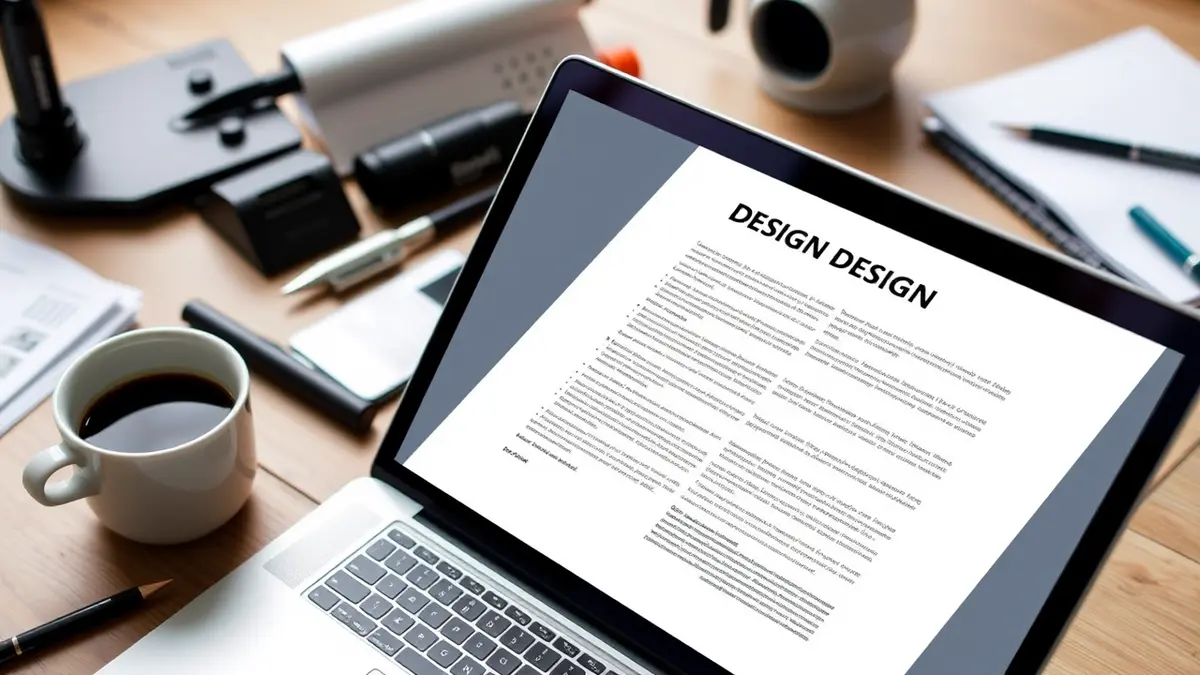
Freelance Contract Template: Product Design
Freelance Contract Template: Product Design
As a product designer, securing a well-defined contract is crucial for protecting your interests and ensuring a smooth project execution. A clear contract lays the foundation for a successful partnership with your clients. This blog post provides a freelance contract template specifically tailored for product design projects, helping you establish clear expectations and safeguard your work.
Why You Need a Product Design Contract
A freelance contract is more than just a formality; it's a vital document that outlines the scope of work, payment terms, timelines, and intellectual property rights. Without a comprehensive contract, you risk misunderstandings, payment disputes, and scope creep. A well-drafted contract provides legal protection and clarity for both you and your client. It sets the stage for a professional and mutually beneficial relationship.
Key Elements of a Freelance Product Design Contract
Here’s what to include in your product design contract:
-
Parties Involved: Clearly identify both the freelancer (you) and the client, including their full legal names and addresses.
-
Scope of Work: Define the specific services you'll be providing. Be as detailed as possible about the design deliverables, including the number of revisions, file formats, and specific platforms (e.g., iOS, Android, web). For example, instead of just "design the app," specify "design 5 key screens for the iOS app, including the login screen, homepage, product detail page, cart page, and checkout page, with up to 2 revisions per screen."
-
Project Timeline: Outline the project start date, milestones, and expected completion date. A detailed timeline helps manage expectations and keep the project on track. Include dates for deliverables and client feedback.
-
Payment Terms: Clearly state your payment rate (hourly, project-based, or retainer), payment schedule, and acceptable payment methods. Include information about late payment fees and cancellation policies. For example, "50% upfront payment upon signing the contract, 25% upon completion of the wireframes, and 25% upon final delivery of the design assets."
-
Intellectual Property: Specify who owns the intellectual property rights to the designs. Generally, the client owns the rights upon full payment, but you can negotiate different terms. Clearly define the terms of use and any restrictions.
-
Confidentiality: Include a clause that protects the confidentiality of both parties' sensitive information. This is especially important when working with new product ideas or proprietary technologies.
-
Termination Clause: Outline the conditions under which either party can terminate the contract. Specify any penalties or fees associated with termination.
-
Revisions and Changes: Detail how revisions will be handled, including the number of free revisions and the cost of additional revisions. Clearly define the process for requesting and implementing changes to the original scope of work.
-
Liability and Indemnification: Include clauses that limit your liability and protect you from legal claims arising from your work.
-
Governing Law: Specify the jurisdiction whose laws will govern the contract.
Sample Clauses for Your Contract
Scope of Work Example
"The Designer agrees to provide the Client with the following product design services: [Detailed list of services, e.g., user research, wireframing, prototyping, UI design, visual design, usability testing]. Specifically, the Designer will deliver [list of deliverables, e.g., wireframes in Figma, high-fidelity mockups in Adobe XD, interactive prototype in InVision]."
Payment Terms Example
"The Client agrees to pay the Designer a total fee of $[amount] for the services described in the Scope of Work. Payment will be made according to the following schedule: 50% upfront upon signing this contract, 25% upon approval of the wireframes, and 25% upon final delivery of the completed design assets. Late payments will incur a fee of [percentage] per month."
Finding and Using a Template
There are many resources online where you can find freelance contract templates. Look for templates that are specifically designed for creative professionals and tailored to product design. Websites like Docracy, Rocket Lawyer, and LegalZoom offer customizable contract templates. Remember to review and adapt any template to fit the specific needs of your project and consult with a legal professional if you have any questions.
Conclusion
A well-crafted freelance contract is essential for any product designer. By using a template and customizing it to your specific needs, you can protect your interests, manage expectations, and ensure a successful project outcome. Take the time to create a comprehensive contract that clearly defines the scope of work, payment terms, and other important details. This investment in legal protection will save you time, money, and potential headaches in the long run, allowing you to focus on creating great product design.


